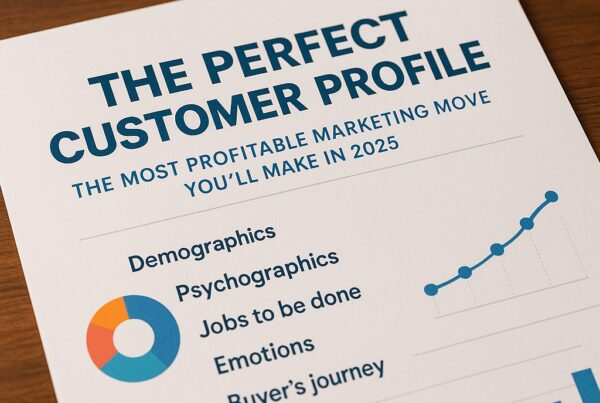Mastering Marketing Plans: Strategies for Standout Campaigns
What makes a marketing plan effective? This guide demystifies the process, providing a step-by-step blueprint to create marketing plans that align with your business goals and resonate with your audience. We’ll cover key elements from identifying targets to selecting channels and measuring outcomes, equipping you with the knowledge to elevate your marketing strategy.
Key Takeaways
- A robust marketing strategy blueprint involves aligning with the company’s vision and mission, setting SMART business goals, and conducting comprehensive market segmentation to target the right audience effectively.
- Designing a marketing plan requires establishing measurable objectives, choosing appropriate marketing channels, and developing specific marketing tactics to reach and engage the target market.
- Achieving operational excellence in marketing execution is key, which includes streamlining workflows, engaging stakeholders, utilizing agile methodologies, and pursuing continuous improvement for increased efficiency and effectiveness.
Crafting Your Marketing Strategy Blueprint

The cornerstone of any successful marketing campaign is a solid marketing strategy blueprint. This blueprint often referred to as marketing strategy outlines, ensures that your marketing efforts are not just a series of random acts but a carefully thought-out, cohesive plan that aligns with the overall business strategy.
But how do you craft such a blueprint? What should it encompass?
Vision and Mission Alignment
The blueprint of a marketing strategy isn’t solely about achieving business goals. It’s about ensuring these goals are aligned with the company’s vision and mission statement. The value proposition, which represents your commitment to delivering value to the customer, must be intertwined with every stage of the marketing funnel.
In essence, your marketing plan should reflect your company’s mission and communicate it effectively and consistently to the target audience.
Identifying Business Goals
The marketing strategy should also align with the broader business objectives. SMART goals (Specific, Measurable, Attainable, Relevant, Time-Bound) are integral to this process. Examples of such goals can include decreasing customer churn rate from 30% to 10% or increasing website traffic by a specific target.
Outlining these goals before executing tactics allows for a more strategic approach to achieving objectives.
Market Segmentation and Targeting
Comprehending your target market through market research is a vital step in forming a blueprint. This involves segmenting your market based on various factors, such as demographic or psychographic data, and then targeting specific customer groups.
Buyer personas, representations of optimal customers, are a fundamental tool in this process, allowing businesses to comprehend customer details and customize their marketing strategies with greater precision.
In-Depth Marketing Strategy Consultation:
Are you a small business owner, entrepreneur, or startup looking to refine your marketing approach? I invite you to schedule an in-depth strategy session with me. This consultation is more than just a discussion; it’s a deep dive into your business’s unique challenges and opportunities in the marketplace. We’ll explore how to align your marketing efforts with your business goals, identify key areas for growth, and develop a tailored plan to elevate your brand.
Click here to book your session and embark on a journey to marketing excellence.
Designing a Comprehensive Marketing Plan

With a solid marketing strategy blueprint in place, the next step is to design a comprehensive marketing plan. This plan will detail the specific actions you’ll take to accomplish the components of your strategy within a defined timeframe.
But what does a comprehensive marketing plan look like?
Establishing Marketing Objectives
Establishing clear marketing objectives is necessary before developing marketing initiatives. These objectives should be measurable and align with the core aspects of the SMART criteria to ensure that each marketing initiative serves a clear purpose and can be tracked for its effectiveness.
Key performance indicators (KPIs) play a vital role in this process, providing quantifiable metrics that hold significance for a business and can be objectively measured.
Selecting Appropriate Marketing Channels
Once the objectives are set, the next step is to select the appropriate marketing channels. This involves understanding where your target audience is most active and choosing those platforms for your marketing efforts.
Channel selection can significantly affect the success of your marketing strategies, necessitating careful decision-making.
Developing Marketing Tactics
It’s now time to formulate marketing tactics. This is where you decide how to use your selected marketing channels to achieve your marketing objectives. Depending on your business goals and target audience, these tactics may range from creating viral content to hosting contests or leveraging influencer collaborations.
Building a Robust Social Media Marketing Plan

In the digital age, social media has emerged as a powerful tool for businesses. It offers a platform for brands to interact with their audience, build relationships, and ultimately drive sales.
Consequently, a solid social media marketing plan should be integrated into your overarching marketing strategy.
Content Strategy for Engagement
Content is king, they say, and nowhere is this truer than on social media. A well-crafted content strategy can drive engagement, foster customer loyalty, and enhance brand visibility. To develop such a strategy, it’s important to understand your audience and create content that resonates with them, keeping in mind their interests, preferences, and the platforms they engage with.
Social Media Advertising Approaches
While organic content is important, it’s often not enough to reach your marketing goals. That’s where social media advertising comes in. By targeting specific demographics and using compelling ad creatives, you can significantly increase your reach and conversions.
Metrics and KPIs for Social Success
A successful social media marketing plan should always incorporate a performance-tracking system. This involves defining key metrics and KPIs that align with your objectives and using them to measure the success of your campaigns. With these insights, you can refine your strategy and ensure your social media efforts are driving the desired results.
Allocating Resources and Budgeting Wisely

Creating a marketing plan is one thing, but executing it is another. This requires careful allocation of resources and budgeting to ensure that your plan is not only feasible but also cost-effective.
Human and Technological Investments
Allocating resources to both human and technological aspects is key to the successful execution of a marketing plan. This includes assembling a skilled marketing team with diverse capabilities and leveraging technological tools to streamline processes and enhance efficiency.
Budget Breakdown and ROI Projections
When it comes to budgeting, it’s important to allocate funds to different marketing activities based on their projected impact on your business goals. It’s equally important to project ROI for these activities to ensure that your investment is yielding a positive return.
The Art of Competitive Advantage

In the fiercely competitive business landscape, gaining a competitive advantage is crucial. This involves understanding your competitors, identifying your unique selling proposition, and leveraging this to set your brand apart.
Conducting a Competitive Analysis
An integral aspect of achieving a competitive edge involves performing a competitive analysis. This involves identifying your competitors, analyzing their strengths and weaknesses, and using this information to inform your own marketing strategies.
SWOT Analysis for Strategic Positioning
Performing a SWOT analysis, identifying Strengths, Weaknesses, Opportunities, and Threats, is another significant tool for gaining a competitive edge. By identifying these aspects of your business, you can develop strategies that capitalize on your strengths and opportunities and address your weaknesses and threats.
Crafting a Winning Content Marketing Approach
Content marketing is an integral part of any digital marketing strategy. Creating valuable, relevant content can attract, engage, and convert your target audience. But how do you craft a winning content marketing approach?
Defining Your Content Pillars
The first step in creating a content marketing approach is defining your content pillars. These are the core topics your content will revolve around, and they should reflect your brand’s expertise and the interests of your target audience.
Editorial Calendars and Production Schedules
Once you’ve defined your content pillars, it’s important to plan your content production. This involves creating an editorial calendar and production schedule to ensure that your content is published consistently and in a timely manner.
Measuring Content Impact
Assessing the influence of your content marketing endeavours is also crucial. By tracking key metrics such as engagement and conversions, you can assess the effectiveness of your content and refine your approach accordingly.
Unlocking the Power of Digital Marketing
Digital marketing has revolutionized the way businesses reach their customers. With the right strategies, digital marketing can help you reach a wider audience, engage with your customers, and drive more sales.
Embracing SEO and Online Visibility
One of the key components of digital marketing is search engine optimization or SEO. When you optimize your website and content for search engines, you will improve your online visibility and attract more organic traffic.
Email Marketing Strategies for Conversion
Email marketing is another powerful digital marketing strategy. By sending targeted, personalized emails to your audience, you will nurture leads, drive conversions, and develop customer loyalty.
Analytics and Data-Driven Insights
Furthermore, digital marketing provides a platform to utilize data-informed insights for refining your strategies. By tracking key metrics and analyzing your performance, you can make informed decisions that drive better results.
Operational Excellence in Marketing Execution
Operational excellence in executing a well-structured marketing plan holds as much importance as the plan itself. Marketing leaders know that this involves streamlining workflows, engaging stakeholders, and continuously improving their processes.
Streamlining Workflows and Processes
Improving operational efficiency hinges upon the streamlining of workflows and processes. By standardizing workflows, you can ensure consistent and correct execution of tasks, leading to improved client service and operational efficiency.
Stakeholder Engagement and Communication
Successful marketing execution also heavily relies on effective communication and stakeholder engagement. By keeping stakeholders informed and involved, you can ensure that everyone is aligned with the marketing objectives and working towards the same goals.
Continuous Improvement and Agile Methodologies
Continuous improvement and the adoption of agile methodologies can additionally boost operational efficiency. By regularly reviewing and refining your processes, you can ensure that your marketing execution remains effective and efficient.
Marketing Plan Templates and Tools
To help you in your journey toward mastering marketing plans and strategies, various tools are available, including a marketing plan template and a free marketing plan template. These tools can assist in structuring your plan, tracking your progress, and refining your strategies.
Summary
In conclusion, mastering marketing plans and strategies involves crafting a blueprint that aligns with your business goals, designing a comprehensive plan, building a robust social media strategy, allocating resources wisely, gaining a competitive advantage, crafting a winning content marketing approach, leveraging the power of digital marketing, and executing your plan with operational excellence. By following these steps and utilizing the right tools and templates, you can create a standout campaign that drives results.
Personalized Strategy Development Session:
Take the first step towards marketing mastery with a personalized strategy development session. This is your opportunity to work one-on-one with a seasoned marketing expert who understands the complexities and nuances of building a successful brand in today’s competitive landscape. In our session, we will analyze your current marketing strategies, discuss innovative approaches tailored to your business, and create a roadmap for success that resonates with your unique vision.
Book your session now and unlock the full potential of your marketing efforts.
Click here to book your session
Frequently Asked Questions
What are the 7 elements of a marketing plan?
The 7 elements of a marketing plan are traditionally known as the marketing mix’s 7 Ps, including product, price, place, promotion, packaging, positioning, and people.
What is a 5-point marketing plan?
A 5 point marketing plan consists of the 5 P’s of marketing: Product, Price, Promotion, Place, and People. These components provide a framework to guide marketing strategies and keep marketers focused on key aspects of their brand.
What is a marketing plan and example?
A marketing plan is a detailed roadmap outlining strategies, objectives, and tactics to achieve marketing goals. For example, a marketing plan might include social media marketing, influencer marketing, video marketing, and email marketing.
What are the 4 strategic marketing plans?
The 4 strategic marketing plans are the four Ps: product, price, place, and promotion. These factors help in devising a successful marketing strategy.
What is in a marketing plan?
A marketing plan is a document that outlines a business’s marketing strategy, promotional activities, and advertising efforts for a specific period, usually a year. It includes details on the target market, pricing, and measurement of efforts.



